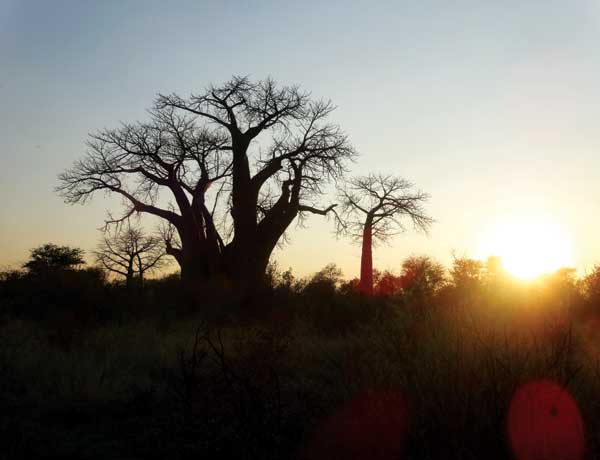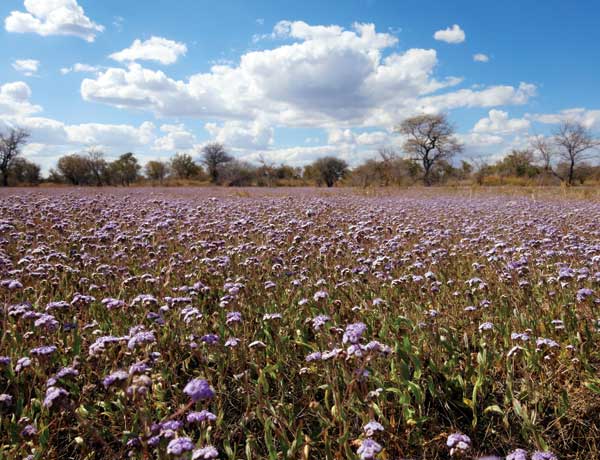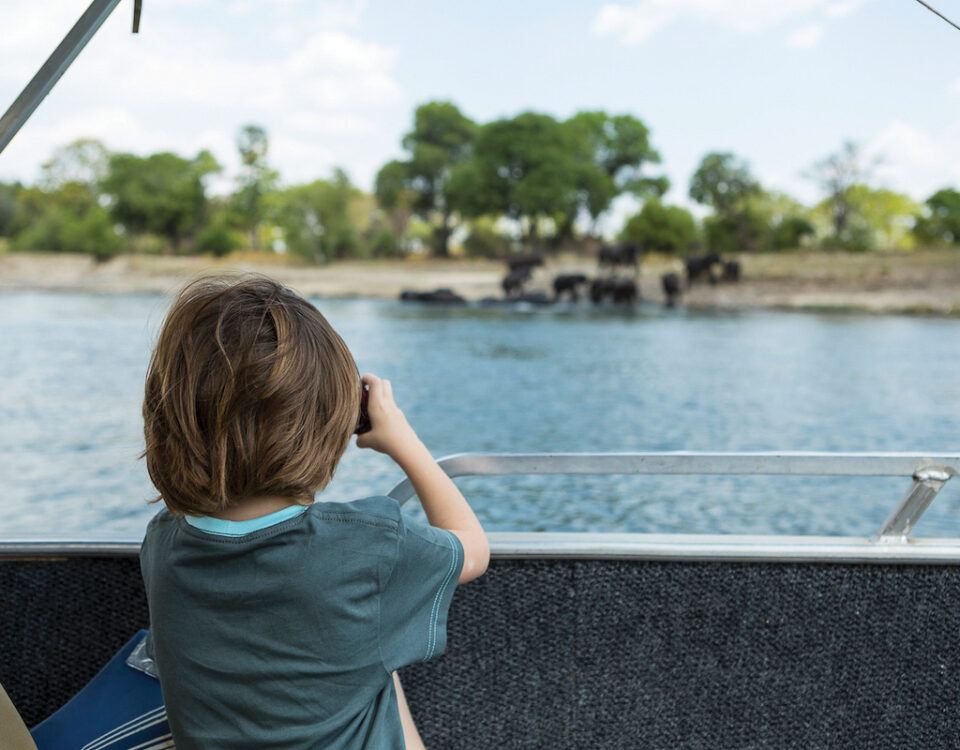| Main photo ©Paul van Schalkwyk

Extraordinary trophies from Namibia
June 8, 2016
My favourite quarry
June 9, 2016T he sandy wastes of this eastern part of Namibia extend from the Kavango River and the Kaudum area in the north right down to the Orange River which forms the border with the Republic of South Africa. They spread out for hundreds of kilometres from just beyond the western escarpment of the subcontinent. This part of Africa is synonymous with discovery and adventure. It retells tales of ox waggons and weary horses and riders. Elephant hunters. Adventure seekers. Renegades from the law. It is flat. It is sandy. It seems to go on forever. The trees are wide and lofty. This landscape lifts the mind. The future lies ahead. Anyone can see that.
Apart from a single scattered reef of koppies stretching from Windhoek past Dordabis, Nina, Gobabis and Buitepos deep into the Ghanzi-area of Botswana, the eastern part of Namibia does not have the dramatic rugged and towering landscapes of the Karas or Hardap regions, the Erongo, the Khomas Highlands, Damaraland or Kaokoveld. The river courses are dry and come down in flood only after heavy rains in their catchment areas. These ephemeral rivers are called omuramba in the Herero language (plural: omiramba). The water quickly disappears into the sand and recharges the underground aquifers. Natural bodies of permanent surface water are found almost nowhere. Therefore the one or two springs bubbling to the surface in the extreme east of this arid land (the so-called Bushmanland and Hereroland) have been precious sources of life since pre-historic times. Bands of Ju’/huansi and Nharo hunter-gatherers and Herero-herders have roamed this great expanse, precariously existing on scarce water resources and elusive game animals. Only here, in this eastern part of the Omaheke, were the places where elephants could drink and small herds of buffalo, eland and roan antelope gathered.
The Omaheke has always been an important haven for game. Still today the highest density of game per square area in Namibia is found here. It is a natural reservoir of animals, a kind of paradise, if you get to know it. The animals that thrived in most of this area were never water-dependent: mostly kudu, steenbok, duiker, springbuck and oryx. Other antelope species slowly migrated into the area only after cattle farmers started drilling for water and digging wells. Then followed the blue wildebeest, hartebeest and other water-dependent species.
Due to its vastness and openness the Omaheke demands a very specific form of hunting. Local farmers hunting for meat and biltong usually do a quick drive around the farm and take long-distance shots at whatever game animal appears in his binoculars and his rifle scope. In the past, roughly up to the 1960s and 1970s, wild animals in this area were seen as competing with livestock and were shot on sight. Lions, leopards, cheetahs and wild dogs were killed as vermin. Game provided meat for the farmer and farm workers alike. The philosophy was that ‘if I don’t shoot these right now, my neighbour will do so by tomorrow’. Today game is seen as a valuable and sustainable resource, better adapted and less destructive to the environment than domestic stock, and many farmers find that game is financially more lucrative.
Ethical hunting in the remote north-east of Omaheke is a difficult undertaking. To the uninitiated it may seem as if for miles on end nothing lives in this sandy waste. Apart from around the artificial water-points (game drinking places or cattle-posts), where it is in any case not ethically sound to kill, area-bound animal densities in the whole of the Omaheke are highly fluctuating. This is due to small variances in the ecosystem, the characteristics of which are not yet properly understood. A hunter may sometimes walk or drive for hours without seeing any game, and then suddenly, around the next cluster of bushes the place may be teeming with game of all kinds – without any perceptible change in the environment.
This phenomenon may have something to do with the sweetness and quality of the grass, with how short it was grazed by previous herds (most game prefer shorter, greener grass), with the amount, chronology and sequence of previous rain, with the current wind direction, the history of veld fires, the density of the surrounding undergrowth, the salt and phosphate content of the soil, the presence of other animals at a specific place, or a combination of all of these, and more. Here, a hunter has to be willing to walk really far, and he has to know the terrain as well as the back of his hand, or else take along a guide who grew up in these parts. Under these circumstances a good local guide is really worth his salt. The indigenous hunters who grow up with bow and arrow and know how the veld ‘behaves’, seem to know instinctively where to go look for game in this otherwise monotonous landscape. When asked, they are unable to explain the logic that they follow, but a visiting hunter can bet his boots that they will someway or other lead him to these pockets of abundant game. I have seen this time after time, but I still don’t understand the logic.
The search for game pockets has to be done on foot in order to provide a really rewarding hunt. Driving around in a vehicle on the off chance that animals will be spotted, and then getting down from the vehicle for a final few hundred meters of walk and stalk, just does not provide the same sense of satisfaction and achievement. To my mind this type of hunting is just as unethical as shooting from the vehicle in the first place.
Apart from the hilly slopes of the Ghanzi-bound reef (which itself carries an abundance of game), a hunt in the Omaheke region provides specific characteristics which are not found in other types of terrain. Some of these make it easier for the hunter than in other areas, some make it much more difficult.
Tracking is made easier by the open sand and tufted grass. Stalking is easier, because the tall grass provides enough cover for the hunter to crouch into – if he is willing and able to go down low enough. Stalking is quieter, especially with soft shoes or wearing socks only, because the hunter’s movements are not restricted by the crunching pebbles and knee-cap defying stones of other ecological areas in Namibia. The going is easier, because the terrain is flat, and becomes more difficult only in some places where the sand gets really thick. The monotony of the landscape sometimes gets on ones nerves. The cicadas sing much more insistent. The sun burns down more intensely.
“This venture of searching for game pockets where they occur has to be done on foot to provide a really rewarding hunt.”


“The trees are high with wide canopies. The landscape lifts the mind. The future lies ahead. All who come here see this.”
Here it is mostly impossible to glass for animals from higher terrain, as can be done in the Khomas Highlands or other mountainous areas. Animals have to be looked for on foot, and this has to be done in slow motion. The savannah plant ecology of shrubs and trees makes it difficult to see animals before they see you from their hiding places in shadows and bushes. It is more difficult to judge trophy quality in the split instance of confrontation. The hunter has less time to prepare for the shot. And once an animal has been flushed from its hiding place it normally keeps moving downwind, which makes it very difficult to catch unawares.
It is also easy to get lost in terrain like this, where every moment looks the same as the previous one, and where the trees and bush replicate themselves every hundred metres or so. I myself got lost on several occasions and could only find my way home thanks to a good guide accompanying me, but even he had to extract us from the bush by first finding some sort of previously encountered game track, prominent clump of trees or parallel farm road. It is good advice to always make mental notes of where one goes, even if the hunt gets exciting. This is especially true when following wounded game, which will move in all kinds of unexpected directions in order to lose the hunter, and get him lost.
Lacking the dramatic landscape of other areas in Namibia the hunter has to focus on trees instead; they are also a source of beauty. The Omaheke definitely provides enough trees: towering camel thorns, umbrella thorn, buffalo thorn, camphor bush and thick-stemmed shepherd trees intersperse the huge expanses of black thorn and sickle bush (which are not so nice to penetrate, but often hide the best kudu bulls). For me, however, the best of the Omaheke landscape is its grass: green, golden, yellow or white, depending on the season and the fall of light. Dead still, undulating or madly dancing, depending on the strength of the wind.
And all of this is nutrition, a kind of food that you keep moving through. Food for the animals you are hunting. Food for thought. Food for lonely evenings back in a city somewhere far from where you really want to be. In the same way that a proper Russian will not forget his steppe, I shall never forget the grass of the Omaheke. The grass and the stillness and the multi-coloured glistening of the sand. And every unexpected moment of surprise.
“The Omaheke has always been an important haven for game. Today the highest density of game in Namibia is still found here.”
Namibian born Piet van Rooyen, is professor in Political Studies at the University of Namibia in Windhoek. He is an award-winning author and part-time farmer. He hunted and wrote about hunting in Namibia, but especially loves the northern part of Namibia’s Omaheke Region, called Bushmanland.
This article was first published in the HUNTiNAMIBIA 2015 issue.


